Refine search
No keyword found to refine search
keywords EN
Places
Names
123 documents found
| 1 | 3 |
Documents per page :
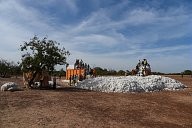
Cotton Campaign in Mali 2019-2020.
Nicolas Réméné / Le Pictorium
LePictorium_0220663.jpg
Not far from the municipality of Diaramana, in the Segou region of Mali, the cotton harvesting campaign has begun. The seed cotton harvested in the different surrounding fields is centralized in one place. Young workers fill large bags of cotton and throw them into a dumpster. There other workers tamp cotton with their feet. A truck will then load the bucket to bring it to the mill, a step of separating the cotton fibers from the seeds that carry them. Cotton Campaign in Mali 2019-2020. While the harvest began in virtually all areas of production, Mali, which had set a goal of 800,000 tons of seed cotton, is now reducing its forecasts. If at the launch of the campaign plan last April, the Minister of Agriculture Moulaye Ahmed Boubacar expects an increase of 22% over the previous year, it could be that this campaign is quite poor and hardly exceeds the 600 000T and this despite an increase in cultivation areas. Figures are falling, mainly because of sparse rainfall but also late delivery of agricultural inputs. In Mali, cotton grown on more than 650,000 ha by about 162,000 producers represents 22% of the country's exports. The cotton season allows the creation of many seasonal jobs and it is estimated that nearly 4 million Malians derive their income from cotton farming, which plays a very important role in the socio-economic development of the regions concerned. Mali, which is also suffering a fall in the price of cotton globally, could lose its place this year as the leading producer of seed cotton Africa, at the expense of its neighbor Burkina Faso.
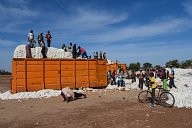
Cotton Campaign in Mali 2019-2020.
Nicolas Réméné / Le Pictorium
LePictorium_0220664.jpg
Not far from the municipality of Diaramana, in the Segou region of Mali, the cotton harvesting campaign has begun. The seed cotton harvested in the different surrounding fields is centralized in one place. Young workers fill large bags of cotton and throw them into a dumpster. There other workers tamp cotton with their feet. A truck will then load the bucket to bring it to the mill, a step of separating the cotton fibers from the seeds that carry them. Cotton Campaign in Mali 2019-2020. While the harvest began in virtually all areas of production, Mali, which had set a goal of 800,000 tons of seed cotton, is now reducing its forecasts. If at the launch of the campaign plan last April, the Minister of Agriculture Moulaye Ahmed Boubacar expects an increase of 22% over the previous year, it could be that this campaign is quite poor and hardly exceeds the 600 000T and this despite an increase in cultivation areas. Figures are falling, mainly because of sparse rainfall but also late delivery of agricultural inputs. In Mali, cotton grown on more than 650,000 ha by about 162,000 producers represents 22% of the country's exports. The cotton season allows the creation of many seasonal jobs and it is estimated that nearly 4 million Malians derive their income from cotton farming, which plays a very important role in the socio-economic development of the regions concerned. Mali, which is also suffering a fall in the price of cotton globally, could lose its place this year as the leading producer of seed cotton Africa, at the expense of its neighbor Burkina Faso.

Cotton Campaign in Mali 2019-2020.
Nicolas Réméné / Le Pictorium
LePictorium_0220665.jpg
Not far from the municipality of Diaramana, in the Segou region of Mali, the cotton harvesting campaign has begun. The seed cotton harvested in the different surrounding fields is centralized in one place. Young workers fill large bags of cotton and throw them into a dumpster. There other workers tamp cotton with their feet. A truck will then load the bucket to bring it to the mill, a step of separating the cotton fibers from the seeds that carry them. Cotton Campaign in Mali 2019-2020. While the harvest began in virtually all areas of production, Mali, which had set a goal of 800,000 tons of seed cotton, is now reducing its forecasts. If at the launch of the campaign plan last April, the Minister of Agriculture Moulaye Ahmed Boubacar expects an increase of 22% over the previous year, it could be that this campaign is quite poor and hardly exceeds the 600 000T and this despite an increase in cultivation areas. Figures are falling, mainly because of sparse rainfall but also late delivery of agricultural inputs. In Mali, cotton grown on more than 650,000 ha by about 162,000 producers represents 22% of the country's exports. The cotton season allows the creation of many seasonal jobs and it is estimated that nearly 4 million Malians derive their income from cotton farming, which plays a very important role in the socio-economic development of the regions concerned. Mali, which is also suffering a fall in the price of cotton globally, could lose its place this year as the leading producer of seed cotton Africa, at the expense of its neighbor Burkina Faso.

Cotton Campaign in Mali 2019-2020.
Nicolas Réméné / Le Pictorium
LePictorium_0220666.jpg
Not far from the municipality of Diaramana, in the Segou region of Mali, the cotton harvesting campaign has begun. The seed cotton harvested in the different surrounding fields is centralized in one place. Young workers fill large bags of cotton and throw them into a dumpster. There other workers tamp cotton with their feet. A truck will then load the bucket to bring it to the mill, a step of separating the cotton fibers from the seeds that carry them. Cotton Campaign in Mali 2019-2020. While the harvest began in virtually all areas of production, Mali, which had set a goal of 800,000 tons of seed cotton, is now reducing its forecasts. If at the launch of the campaign plan last April, the Minister of Agriculture Moulaye Ahmed Boubacar expects an increase of 22% over the previous year, it could be that this campaign is quite poor and hardly exceeds the 600 000T and this despite an increase in cultivation areas. Figures are falling, mainly because of sparse rainfall but also late delivery of agricultural inputs. In Mali, cotton grown on more than 650,000 ha by about 162,000 producers represents 22% of the country's exports. The cotton season allows the creation of many seasonal jobs and it is estimated that nearly 4 million Malians derive their income from cotton farming, which plays a very important role in the socio-economic development of the regions concerned. Mali, which is also suffering a fall in the price of cotton globally, could lose its place this year as the leading producer of seed cotton Africa, at the expense of its neighbor Burkina Faso.
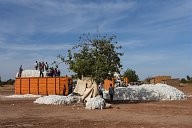
Cotton Campaign in Mali 2019-2020.
Nicolas Réméné / Le Pictorium
LePictorium_0220667.jpg
Not far from the municipality of Diaramana, in the Segou region of Mali, the cotton harvesting campaign has begun. The seed cotton harvested in the different surrounding fields is centralized in one place. Young workers fill large bags of cotton and throw them into a dumpster. There other workers tamp cotton with their feet. A truck will then load the bucket to bring it to the mill, a step of separating the cotton fibers from the seeds that carry them. Cotton Campaign in Mali 2019-2020. While the harvest began in virtually all areas of production, Mali, which had set a goal of 800,000 tons of seed cotton, is now reducing its forecasts. If at the launch of the campaign plan last April, the Minister of Agriculture Moulaye Ahmed Boubacar expects an increase of 22% over the previous year, it could be that this campaign is quite poor and hardly exceeds the 600 000T and this despite an increase in cultivation areas. Figures are falling, mainly because of sparse rainfall but also late delivery of agricultural inputs. In Mali, cotton grown on more than 650,000 ha by about 162,000 producers represents 22% of the country's exports. The cotton season allows the creation of many seasonal jobs and it is estimated that nearly 4 million Malians derive their income from cotton farming, which plays a very important role in the socio-economic development of the regions concerned. Mali, which is also suffering a fall in the price of cotton globally, could lose its place this year as the leading producer of seed cotton Africa, at the expense of its neighbor Burkina Faso.
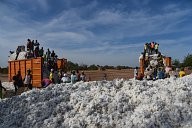
Cotton Campaign in Mali 2019-2020.
Nicolas Réméné / Le Pictorium
LePictorium_0220668.jpg
Not far from the municipality of Diaramana, in the Segou region of Mali, the cotton harvesting campaign has begun. The seed cotton harvested in the different surrounding fields is centralized in one place. Young workers fill large bags of cotton and throw them into a dumpster. There other workers tamp cotton with their feet. A truck will then load the bucket to bring it to the mill, a step of separating the cotton fibers from the seeds that carry them. Cotton Campaign in Mali 2019-2020. While the harvest began in virtually all areas of production, Mali, which had set a goal of 800,000 tons of seed cotton, is now reducing its forecasts. If at the launch of the campaign plan last April, the Minister of Agriculture Moulaye Ahmed Boubacar expects an increase of 22% over the previous year, it could be that this campaign is quite poor and hardly exceeds the 600 000T and this despite an increase in cultivation areas. Figures are falling, mainly because of sparse rainfall but also late delivery of agricultural inputs. In Mali, cotton grown on more than 650,000 ha by about 162,000 producers represents 22% of the country's exports. The cotton season allows the creation of many seasonal jobs and it is estimated that nearly 4 million Malians derive their income from cotton farming, which plays a very important role in the socio-economic development of the regions concerned. Mali, which is also suffering a fall in the price of cotton globally, could lose its place this year as the leading producer of seed cotton Africa, at the expense of its neighbor Burkina Faso.
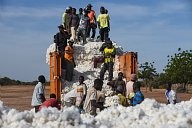
Cotton Campaign in Mali 2019-2020.
Nicolas Réméné / Le Pictorium
LePictorium_0220669.jpg
Not far from the municipality of Diaramana, in the Segou region of Mali, the cotton harvesting campaign has begun. The seed cotton harvested in the different surrounding fields is centralized in one place. Young workers fill large bags of cotton and throw them into a dumpster. There other workers tamp cotton with their feet. A truck will then load the bucket to bring it to the mill, a step of separating the cotton fibers from the seeds that carry them. Cotton Campaign in Mali 2019-2020. While the harvest began in virtually all areas of production, Mali, which had set a goal of 800,000 tons of seed cotton, is now reducing its forecasts. If at the launch of the campaign plan last April, the Minister of Agriculture Moulaye Ahmed Boubacar expects an increase of 22% over the previous year, it could be that this campaign is quite poor and hardly exceeds the 600 000T and this despite an increase in cultivation areas. Figures are falling, mainly because of sparse rainfall but also late delivery of agricultural inputs. In Mali, cotton grown on more than 650,000 ha by about 162,000 producers represents 22% of the country's exports. The cotton season allows the creation of many seasonal jobs and it is estimated that nearly 4 million Malians derive their income from cotton farming, which plays a very important role in the socio-economic development of the regions concerned. Mali, which is also suffering a fall in the price of cotton globally, could lose its place this year as the leading producer of seed cotton Africa, at the expense of its neighbor Burkina Faso.
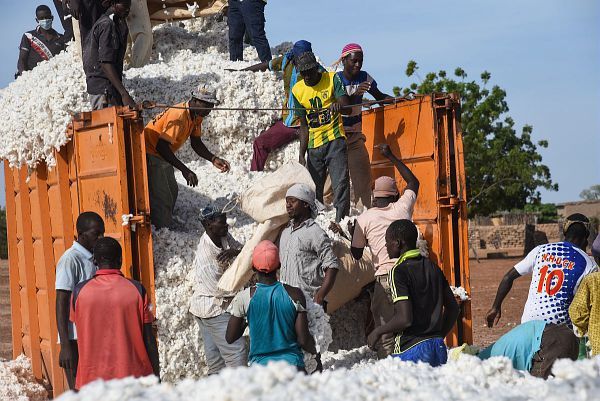
Cotton Campaign in Mali 2019-2020.
Nicolas Réméné / Le Pictorium
LePictorium_0220670.jpg
Not far from the municipality of Diaramana, in the Segou region of Mali, the cotton harvesting campaign has begun. The seed cotton harvested in the different surrounding fields is centralized in one place. Young workers fill large bags of cotton and throw them into a dumpster. There other workers tamp cotton with their feet. A truck will then load the bucket to bring it to the mill, a step of separating the cotton fibers from the seeds that carry them. Cotton Campaign in Mali 2019-2020. While the harvest began in virtually all areas of production, Mali, which had set a goal of 800,000 tons of seed cotton, is now reducing its forecasts. If at the launch of the campaign plan last April, the Minister of Agriculture Moulaye Ahmed Boubacar expects an increase of 22% over the previous year, it could be that this campaign is quite poor and hardly exceeds the 600 000T and this despite an increase in cultivation areas. Figures are falling, mainly because of sparse rainfall but also late delivery of agricultural inputs. In Mali, cotton grown on more than 650,000 ha by about 162,000 producers represents 22% of the country's exports. The cotton season allows the creation of many seasonal jobs and it is estimated that nearly 4 million Malians derive their income from cotton farming, which plays a very important role in the socio-economic development of the regions concerned. Mali, which is also suffering a fall in the price of cotton globally, could lose its place this year as the leading producer of seed cotton Africa, at the expense of its neighbor Burkina Faso.

Cotton Campaign in Mali 2019-2020.
Nicolas Réméné / Le Pictorium
LePictorium_0220671.jpg
Not far from the municipality of Diaramana, in the Segou region of Mali, the cotton harvesting campaign has begun. The seed cotton harvested in the different surrounding fields is centralized in one place. Young workers fill large bags of cotton and throw them into a dumpster. There other workers tamp cotton with their feet. A truck will then load the bucket to bring it to the mill, a step of separating the cotton fibers from the seeds that carry them. Cotton Campaign in Mali 2019-2020. While the harvest began in virtually all areas of production, Mali, which had set a goal of 800,000 tons of seed cotton, is now reducing its forecasts. If at the launch of the campaign plan last April, the Minister of Agriculture Moulaye Ahmed Boubacar expects an increase of 22% over the previous year, it could be that this campaign is quite poor and hardly exceeds the 600 000T and this despite an increase in cultivation areas. Figures are falling, mainly because of sparse rainfall but also late delivery of agricultural inputs. In Mali, cotton grown on more than 650,000 ha by about 162,000 producers represents 22% of the country's exports. The cotton season allows the creation of many seasonal jobs and it is estimated that nearly 4 million Malians derive their income from cotton farming, which plays a very important role in the socio-economic development of the regions concerned. Mali, which is also suffering a fall in the price of cotton globally, could lose its place this year as the leading producer of seed cotton Africa, at the expense of its neighbor Burkina Faso.

Cotton Campaign in Mali 2019-2020.
Nicolas Réméné / Le Pictorium
LePictorium_0220672.jpg
Not far from the municipality of Diaramana, in the Segou region of Mali, the cotton harvesting campaign has begun. The seed cotton harvested in the different surrounding fields is centralized in one place. Young workers fill large bags of cotton and throw them into a dumpster. There other workers tamp cotton with their feet. A truck will then load the bucket to bring it to the mill, a step of separating the cotton fibers from the seeds that carry them. Cotton Campaign in Mali 2019-2020. While the harvest began in virtually all areas of production, Mali, which had set a goal of 800,000 tons of seed cotton, is now reducing its forecasts. If at the launch of the campaign plan last April, the Minister of Agriculture Moulaye Ahmed Boubacar expects an increase of 22% over the previous year, it could be that this campaign is quite poor and hardly exceeds the 600 000T and this despite an increase in cultivation areas. Figures are falling, mainly because of sparse rainfall but also late delivery of agricultural inputs. In Mali, cotton grown on more than 650,000 ha by about 162,000 producers represents 22% of the country's exports. The cotton season allows the creation of many seasonal jobs and it is estimated that nearly 4 million Malians derive their income from cotton farming, which plays a very important role in the socio-economic development of the regions concerned. Mali, which is also suffering a fall in the price of cotton globally, could lose its place this year as the leading producer of seed cotton Africa, at the expense of its neighbor Burkina Faso.
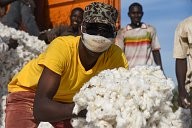
Cotton Campaign in Mali 2019-2020.
Nicolas Réméné / Le Pictorium
LePictorium_0220673.jpg
Not far from the municipality of Diaramana, in the Segou region of Mali, the cotton harvesting campaign has begun. The seed cotton harvested in the different surrounding fields is centralized in one place. Young workers fill large bags of cotton and throw them into a dumpster. There other workers tamp cotton with their feet. A truck will then load the bucket to bring it to the mill, a step of separating the cotton fibers from the seeds that carry them. Cotton Campaign in Mali 2019-2020. While the harvest began in virtually all areas of production, Mali, which had set a goal of 800,000 tons of seed cotton, is now reducing its forecasts. If at the launch of the campaign plan last April, the Minister of Agriculture Moulaye Ahmed Boubacar expects an increase of 22% over the previous year, it could be that this campaign is quite poor and hardly exceeds the 600 000T and this despite an increase in cultivation areas. Figures are falling, mainly because of sparse rainfall but also late delivery of agricultural inputs. In Mali, cotton grown on more than 650,000 ha by about 162,000 producers represents 22% of the country's exports. The cotton season allows the creation of many seasonal jobs and it is estimated that nearly 4 million Malians derive their income from cotton farming, which plays a very important role in the socio-economic development of the regions concerned. Mali, which is also suffering a fall in the price of cotton globally, could lose its place this year as the leading producer of seed cotton Africa, at the expense of its neighbor Burkina Faso.

Cotton Campaign in Mali 2019-2020.
Nicolas Réméné / Le Pictorium
LePictorium_0220674.jpg
Not far from the municipality of Diaramana, in the Segou region of Mali, the cotton harvesting campaign has begun. The seed cotton harvested in the different surrounding fields is centralized in one place. Young workers fill large bags of cotton and throw them into a dumpster. There other workers tamp cotton with their feet. A truck will then load the bucket to bring it to the mill, a step of separating the cotton fibers from the seeds that carry them. Cotton Campaign in Mali 2019-2020. While the harvest began in virtually all areas of production, Mali, which had set a goal of 800,000 tons of seed cotton, is now reducing its forecasts. If at the launch of the campaign plan last April, the Minister of Agriculture Moulaye Ahmed Boubacar expects an increase of 22% over the previous year, it could be that this campaign is quite poor and hardly exceeds the 600 000T and this despite an increase in cultivation areas. Figures are falling, mainly because of sparse rainfall but also late delivery of agricultural inputs. In Mali, cotton grown on more than 650,000 ha by about 162,000 producers represents 22% of the country's exports. The cotton season allows the creation of many seasonal jobs and it is estimated that nearly 4 million Malians derive their income from cotton farming, which plays a very important role in the socio-economic development of the regions concerned. Mali, which is also suffering a fall in the price of cotton globally, could lose its place this year as the leading producer of seed cotton Africa, at the expense of its neighbor Burkina Faso.
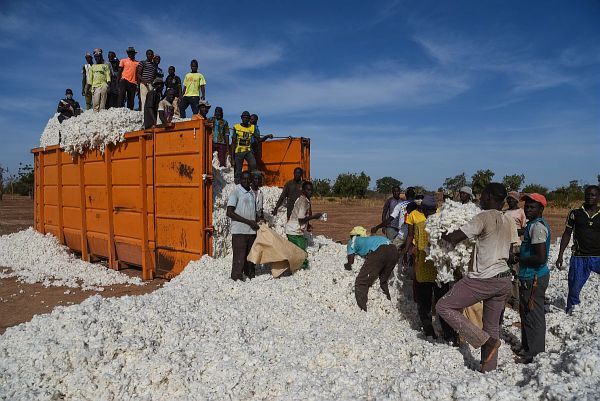
Cotton Campaign in Mali 2019-2020.
Nicolas Réméné / Le Pictorium
LePictorium_0220675.jpg
Not far from the municipality of Diaramana, in the Segou region of Mali, the cotton harvesting campaign has begun. The seed cotton harvested in the different surrounding fields is centralized in one place. Young workers fill large bags of cotton and throw them into a dumpster. There other workers tamp cotton with their feet. A truck will then load the bucket to bring it to the mill, a step of separating the cotton fibers from the seeds that carry them. Cotton Campaign in Mali 2019-2020. While the harvest began in virtually all areas of production, Mali, which had set a goal of 800,000 tons of seed cotton, is now reducing its forecasts. If at the launch of the campaign plan last April, the Minister of Agriculture Moulaye Ahmed Boubacar expects an increase of 22% over the previous year, it could be that this campaign is quite poor and hardly exceeds the 600 000T and this despite an increase in cultivation areas. Figures are falling, mainly because of sparse rainfall but also late delivery of agricultural inputs. In Mali, cotton grown on more than 650,000 ha by about 162,000 producers represents 22% of the country's exports. The cotton season allows the creation of many seasonal jobs and it is estimated that nearly 4 million Malians derive their income from cotton farming, which plays a very important role in the socio-economic development of the regions concerned. Mali, which is also suffering a fall in the price of cotton globally, could lose its place this year as the leading producer of seed cotton Africa, at the expense of its neighbor Burkina Faso.
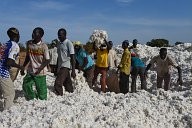
Cotton Campaign in Mali 2019-2020.
Nicolas Réméné / Le Pictorium
LePictorium_0220676.jpg
Not far from the municipality of Diaramana, in the Segou region of Mali, the cotton harvesting campaign has begun. The seed cotton harvested in the different surrounding fields is centralized in one place. Young workers fill large bags of cotton and throw them into a dumpster. There other workers tamp cotton with their feet. A truck will then load the bucket to bring it to the mill, a step of separating the cotton fibers from the seeds that carry them. Cotton Campaign in Mali 2019-2020. While the harvest began in virtually all areas of production, Mali, which had set a goal of 800,000 tons of seed cotton, is now reducing its forecasts. If at the launch of the campaign plan last April, the Minister of Agriculture Moulaye Ahmed Boubacar expects an increase of 22% over the previous year, it could be that this campaign is quite poor and hardly exceeds the 600 000T and this despite an increase in cultivation areas. Figures are falling, mainly because of sparse rainfall but also late delivery of agricultural inputs. In Mali, cotton grown on more than 650,000 ha by about 162,000 producers represents 22% of the country's exports. The cotton season allows the creation of many seasonal jobs and it is estimated that nearly 4 million Malians derive their income from cotton farming, which plays a very important role in the socio-economic development of the regions concerned. Mali, which is also suffering a fall in the price of cotton globally, could lose its place this year as the leading producer of seed cotton Africa, at the expense of its neighbor Burkina Faso.
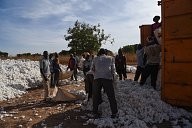
Cotton Campaign in Mali 2019-2020.
Nicolas Réméné / Le Pictorium
LePictorium_0220677.jpg
Not far from the municipality of Diaramana, in the Segou region of Mali, the cotton harvesting campaign has begun. The seed cotton harvested in the different surrounding fields is centralized in one place. Young workers fill large bags of cotton and throw them into a dumpster. There other workers tamp cotton with their feet. A truck will then load the bucket to bring it to the mill, a step of separating the cotton fibers from the seeds that carry them. Cotton Campaign in Mali 2019-2020. While the harvest began in virtually all areas of production, Mali, which had set a goal of 800,000 tons of seed cotton, is now reducing its forecasts. If at the launch of the campaign plan last April, the Minister of Agriculture Moulaye Ahmed Boubacar expects an increase of 22% over the previous year, it could be that this campaign is quite poor and hardly exceeds the 600 000T and this despite an increase in cultivation areas. Figures are falling, mainly because of sparse rainfall but also late delivery of agricultural inputs. In Mali, cotton grown on more than 650,000 ha by about 162,000 producers represents 22% of the country's exports. The cotton season allows the creation of many seasonal jobs and it is estimated that nearly 4 million Malians derive their income from cotton farming, which plays a very important role in the socio-economic development of the regions concerned. Mali, which is also suffering a fall in the price of cotton globally, could lose its place this year as the leading producer of seed cotton Africa, at the expense of its neighbor Burkina Faso.
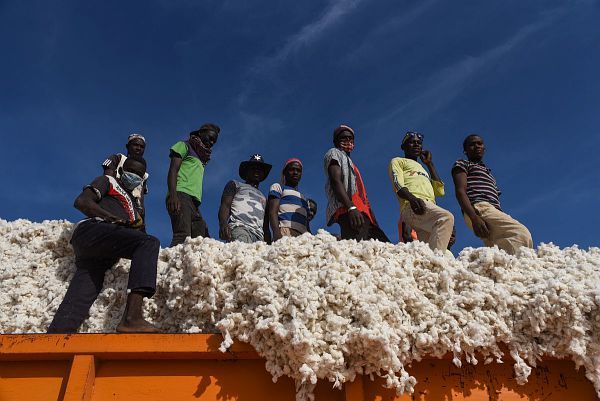
Cotton Campaign in Mali 2019-2020.
Nicolas Réméné / Le Pictorium
LePictorium_0220678.jpg
Not far from the municipality of Diaramana, in the Segou region of Mali, the cotton harvesting campaign has begun. The seed cotton harvested in the different surrounding fields is centralized in one place. Young workers fill large bags of cotton and throw them into a dumpster. There other workers tamp cotton with their feet. A truck will then load the bucket to bring it to the mill, a step of separating the cotton fibers from the seeds that carry them. Cotton Campaign in Mali 2019-2020. While the harvest began in virtually all areas of production, Mali, which had set a goal of 800,000 tons of seed cotton, is now reducing its forecasts. If at the launch of the campaign plan last April, the Minister of Agriculture Moulaye Ahmed Boubacar expects an increase of 22% over the previous year, it could be that this campaign is quite poor and hardly exceeds the 600 000T and this despite an increase in cultivation areas. Figures are falling, mainly because of sparse rainfall but also late delivery of agricultural inputs. In Mali, cotton grown on more than 650,000 ha by about 162,000 producers represents 22% of the country's exports. The cotton season allows the creation of many seasonal jobs and it is estimated that nearly 4 million Malians derive their income from cotton farming, which plays a very important role in the socio-economic development of the regions concerned. Mali, which is also suffering a fall in the price of cotton globally, could lose its place this year as the leading producer of seed cotton Africa, at the expense of its neighbor Burkina Faso.
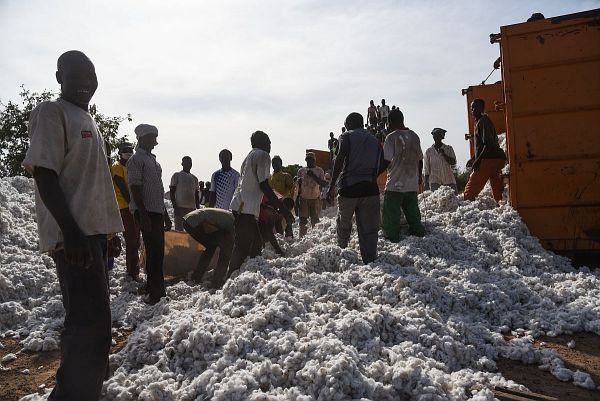
Cotton Campaign in Mali 2019-2020.
Nicolas Réméné / Le Pictorium
LePictorium_0220679.jpg
Not far from the municipality of Diaramana, in the Segou region of Mali, the cotton harvesting campaign has begun. The seed cotton harvested in the different surrounding fields is centralized in one place. Young workers fill large bags of cotton and throw them into a dumpster. There other workers tamp cotton with their feet. A truck will then load the bucket to bring it to the mill, a step of separating the cotton fibers from the seeds that carry them. Cotton Campaign in Mali 2019-2020. While the harvest began in virtually all areas of production, Mali, which had set a goal of 800,000 tons of seed cotton, is now reducing its forecasts. If at the launch of the campaign plan last April, the Minister of Agriculture Moulaye Ahmed Boubacar expects an increase of 22% over the previous year, it could be that this campaign is quite poor and hardly exceeds the 600 000T and this despite an increase in cultivation areas. Figures are falling, mainly because of sparse rainfall but also late delivery of agricultural inputs. In Mali, cotton grown on more than 650,000 ha by about 162,000 producers represents 22% of the country's exports. The cotton season allows the creation of many seasonal jobs and it is estimated that nearly 4 million Malians derive their income from cotton farming, which plays a very important role in the socio-economic development of the regions concerned. Mali, which is also suffering a fall in the price of cotton globally, could lose its place this year as the leading producer of seed cotton Africa, at the expense of its neighbor Burkina Faso.
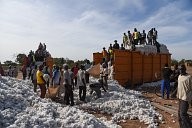
Cotton Campaign in Mali 2019-2020.
Nicolas Réméné / Le Pictorium
LePictorium_0220680.jpg
Not far from the municipality of Diaramana, in the Segou region of Mali, the cotton harvesting campaign has begun. The seed cotton harvested in the different surrounding fields is centralized in one place. Young workers fill large bags of cotton and throw them into a dumpster. There other workers tamp cotton with their feet. A truck will then load the bucket to bring it to the mill, a step of separating the cotton fibers from the seeds that carry them. Cotton Campaign in Mali 2019-2020. While the harvest began in virtually all areas of production, Mali, which had set a goal of 800,000 tons of seed cotton, is now reducing its forecasts. If at the launch of the campaign plan last April, the Minister of Agriculture Moulaye Ahmed Boubacar expects an increase of 22% over the previous year, it could be that this campaign is quite poor and hardly exceeds the 600 000T and this despite an increase in cultivation areas. Figures are falling, mainly because of sparse rainfall but also late delivery of agricultural inputs. In Mali, cotton grown on more than 650,000 ha by about 162,000 producers represents 22% of the country's exports. The cotton season allows the creation of many seasonal jobs and it is estimated that nearly 4 million Malians derive their income from cotton farming, which plays a very important role in the socio-economic development of the regions concerned. Mali, which is also suffering a fall in the price of cotton globally, could lose its place this year as the leading producer of seed cotton Africa, at the expense of its neighbor Burkina Faso.
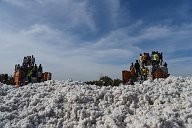
Cotton Campaign in Mali 2019-2020.
Nicolas Réméné / Le Pictorium
LePictorium_0220681.jpg
Not far from the municipality of Diaramana, in the Segou region of Mali, the cotton harvesting campaign has begun. The seed cotton harvested in the different surrounding fields is centralized in one place. Young workers fill large bags of cotton and throw them into a dumpster. There other workers tamp cotton with their feet. A truck will then load the bucket to bring it to the mill, a step of separating the cotton fibers from the seeds that carry them. Cotton Campaign in Mali 2019-2020. While the harvest began in virtually all areas of production, Mali, which had set a goal of 800,000 tons of seed cotton, is now reducing its forecasts. If at the launch of the campaign plan last April, the Minister of Agriculture Moulaye Ahmed Boubacar expects an increase of 22% over the previous year, it could be that this campaign is quite poor and hardly exceeds the 600 000T and this despite an increase in cultivation areas. Figures are falling, mainly because of sparse rainfall but also late delivery of agricultural inputs. In Mali, cotton grown on more than 650,000 ha by about 162,000 producers represents 22% of the country's exports. The cotton season allows the creation of many seasonal jobs and it is estimated that nearly 4 million Malians derive their income from cotton farming, which plays a very important role in the socio-economic development of the regions concerned. Mali, which is also suffering a fall in the price of cotton globally, could lose its place this year as the leading producer of seed cotton Africa, at the expense of its neighbor Burkina Faso.

Cotton Campaign in Mali 2019-2020.
Nicolas Réméné / Le Pictorium
LePictorium_0220682.jpg
Not far from the municipality of Diaramana, in the Segou region of Mali, the cotton harvesting campaign has begun. The seed cotton harvested in the different surrounding fields is centralized in one place. Young workers fill large bags of cotton and throw them into a dumpster. There other workers tamp cotton with their feet. A truck will then load the bucket to bring it to the mill, a step of separating the cotton fibers from the seeds that carry them. Cotton Campaign in Mali 2019-2020. While the harvest began in virtually all areas of production, Mali, which had set a goal of 800,000 tons of seed cotton, is now reducing its forecasts. If at the launch of the campaign plan last April, the Minister of Agriculture Moulaye Ahmed Boubacar expects an increase of 22% over the previous year, it could be that this campaign is quite poor and hardly exceeds the 600 000T and this despite an increase in cultivation areas. Figures are falling, mainly because of sparse rainfall but also late delivery of agricultural inputs. In Mali, cotton grown on more than 650,000 ha by about 162,000 producers represents 22% of the country's exports. The cotton season allows the creation of many seasonal jobs and it is estimated that nearly 4 million Malians derive their income from cotton farming, which plays a very important role in the socio-economic development of the regions concerned. Mali, which is also suffering a fall in the price of cotton globally, could lose its place this year as the leading producer of seed cotton Africa, at the expense of its neighbor Burkina Faso.

Cotton Campaign in Mali 2019-2020.
Nicolas Réméné / Le Pictorium
LePictorium_0220683.jpg
Not far from the municipality of Diaramana, in the Segou region of Mali, the cotton harvesting campaign has begun. The seed cotton harvested in the different surrounding fields is centralized in one place. Young workers fill large bags of cotton and throw them into a dumpster. There other workers tamp cotton with their feet. A truck will then load the bucket to bring it to the mill, a step of separating the cotton fibers from the seeds that carry them. Cotton Campaign in Mali 2019-2020. While the harvest began in virtually all areas of production, Mali, which had set a goal of 800,000 tons of seed cotton, is now reducing its forecasts. If at the launch of the campaign plan last April, the Minister of Agriculture Moulaye Ahmed Boubacar expects an increase of 22% over the previous year, it could be that this campaign is quite poor and hardly exceeds the 600 000T and this despite an increase in cultivation areas. Figures are falling, mainly because of sparse rainfall but also late delivery of agricultural inputs. In Mali, cotton grown on more than 650,000 ha by about 162,000 producers represents 22% of the country's exports. The cotton season allows the creation of many seasonal jobs and it is estimated that nearly 4 million Malians derive their income from cotton farming, which plays a very important role in the socio-economic development of the regions concerned. Mali, which is also suffering a fall in the price of cotton globally, could lose its place this year as the leading producer of seed cotton Africa, at the expense of its neighbor Burkina Faso.
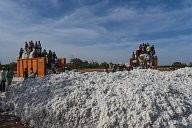
Cotton Campaign in Mali 2019-2020.
Nicolas Réméné / Le Pictorium
LePictorium_0220684.jpg
Not far from the municipality of Diaramana, in the Segou region of Mali, the cotton harvesting campaign has begun. The seed cotton harvested in the different surrounding fields is centralized in one place. Young workers fill large bags of cotton and throw them into a dumpster. There other workers tamp cotton with their feet. A truck will then load the bucket to bring it to the mill, a step of separating the cotton fibers from the seeds that carry them. Cotton Campaign in Mali 2019-2020. While the harvest began in virtually all areas of production, Mali, which had set a goal of 800,000 tons of seed cotton, is now reducing its forecasts. If at the launch of the campaign plan last April, the Minister of Agriculture Moulaye Ahmed Boubacar expects an increase of 22% over the previous year, it could be that this campaign is quite poor and hardly exceeds the 600 000T and this despite an increase in cultivation areas. Figures are falling, mainly because of sparse rainfall but also late delivery of agricultural inputs. In Mali, cotton grown on more than 650,000 ha by about 162,000 producers represents 22% of the country's exports. The cotton season allows the creation of many seasonal jobs and it is estimated that nearly 4 million Malians derive their income from cotton farming, which plays a very important role in the socio-economic development of the regions concerned. Mali, which is also suffering a fall in the price of cotton globally, could lose its place this year as the leading producer of seed cotton Africa, at the expense of its neighbor Burkina Faso.
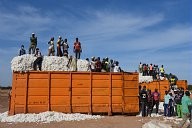
Cotton Campaign in Mali 2019-2020.
Nicolas Réméné / Le Pictorium
LePictorium_0220685.jpg
Not far from the municipality of Diaramana, in the Segou region of Mali, the cotton harvesting campaign has begun. The seed cotton harvested in the different surrounding fields is centralized in one place. Young workers fill large bags of cotton and throw them into a dumpster. There other workers tamp cotton with their feet. A truck will then load the bucket to bring it to the mill, a step of separating the cotton fibers from the seeds that carry them. Cotton Campaign in Mali 2019-2020. While the harvest began in virtually all areas of production, Mali, which had set a goal of 800,000 tons of seed cotton, is now reducing its forecasts. If at the launch of the campaign plan last April, the Minister of Agriculture Moulaye Ahmed Boubacar expects an increase of 22% over the previous year, it could be that this campaign is quite poor and hardly exceeds the 600 000T and this despite an increase in cultivation areas. Figures are falling, mainly because of sparse rainfall but also late delivery of agricultural inputs. In Mali, cotton grown on more than 650,000 ha by about 162,000 producers represents 22% of the country's exports. The cotton season allows the creation of many seasonal jobs and it is estimated that nearly 4 million Malians derive their income from cotton farming, which plays a very important role in the socio-economic development of the regions concerned. Mali, which is also suffering a fall in the price of cotton globally, could lose its place this year as the leading producer of seed cotton Africa, at the expense of its neighbor Burkina Faso.
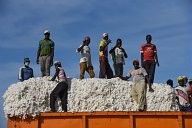
Cotton Campaign in Mali 2019-2020.
Nicolas Réméné / Le Pictorium
LePictorium_0220686.jpg
Not far from the municipality of Diaramana, in the Segou region of Mali, the cotton harvesting campaign has begun. The seed cotton harvested in the different surrounding fields is centralized in one place. Young workers fill large bags of cotton and throw them into a dumpster. There other workers tamp cotton with their feet. A truck will then load the bucket to bring it to the mill, a step of separating the cotton fibers from the seeds that carry them. Cotton Campaign in Mali 2019-2020. While the harvest began in virtually all areas of production, Mali, which had set a goal of 800,000 tons of seed cotton, is now reducing its forecasts. If at the launch of the campaign plan last April, the Minister of Agriculture Moulaye Ahmed Boubacar expects an increase of 22% over the previous year, it could be that this campaign is quite poor and hardly exceeds the 600 000T and this despite an increase in cultivation areas. Figures are falling, mainly because of sparse rainfall but also late delivery of agricultural inputs. In Mali, cotton grown on more than 650,000 ha by about 162,000 producers represents 22% of the country's exports. The cotton season allows the creation of many seasonal jobs and it is estimated that nearly 4 million Malians derive their income from cotton farming, which plays a very important role in the socio-economic development of the regions concerned. Mali, which is also suffering a fall in the price of cotton globally, could lose its place this year as the leading producer of seed cotton Africa, at the expense of its neighbor Burkina Faso.
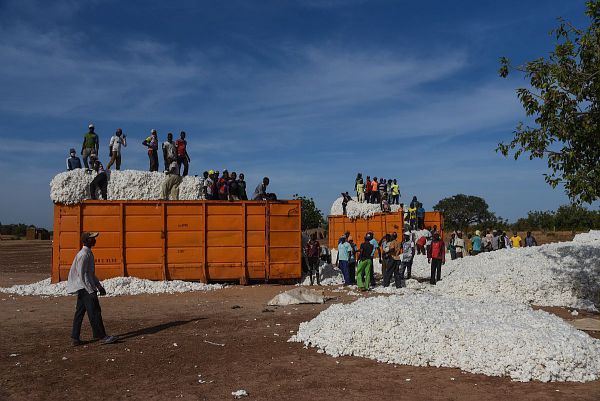
Cotton Campaign in Mali 2019-2020.
Nicolas Réméné / Le Pictorium
LePictorium_0220687.jpg
Not far from the municipality of Diaramana, in the Segou region of Mali, the cotton harvesting campaign has begun. The seed cotton harvested in the different surrounding fields is centralized in one place. Young workers fill large bags of cotton and throw them into a dumpster. There other workers tamp cotton with their feet. A truck will then load the bucket to bring it to the mill, a step of separating the cotton fibers from the seeds that carry them. Cotton Campaign in Mali 2019-2020. While the harvest began in virtually all areas of production, Mali, which had set a goal of 800,000 tons of seed cotton, is now reducing its forecasts. If at the launch of the campaign plan last April, the Minister of Agriculture Moulaye Ahmed Boubacar expects an increase of 22% over the previous year, it could be that this campaign is quite poor and hardly exceeds the 600 000T and this despite an increase in cultivation areas. Figures are falling, mainly because of sparse rainfall but also late delivery of agricultural inputs. In Mali, cotton grown on more than 650,000 ha by about 162,000 producers represents 22% of the country's exports. The cotton season allows the creation of many seasonal jobs and it is estimated that nearly 4 million Malians derive their income from cotton farming, which plays a very important role in the socio-economic development of the regions concerned. Mali, which is also suffering a fall in the price of cotton globally, could lose its place this year as the leading producer of seed cotton Africa, at the expense of its neighbor Burkina Faso.
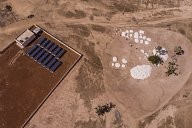
Cotton Campaign in Mali 2019-2020.
Nicolas Réméné / Le Pictorium
LePictorium_0220688.jpg
Aerial view of the heaps of cotton (right) in Diaramana commune on November 22, 2019. In the Ségou region of Mali, the cotton harvesting campaign has begun. Cotton Campaign in Mali 2019-2020. While the harvest began in virtually all areas of production, Mali, which had set a goal of 800,000 tons of seed cotton, is now reducing its forecasts. If at the launch of the campaign plan last April, the Minister of Agriculture Moulaye Ahmed Boubacar expects an increase of 22% over the previous year, it could be that this campaign is quite poor and hardly exceeds the 600 000T and this despite an increase in cultivation areas. Figures are falling, mainly because of sparse rainfall but also late delivery of agricultural inputs. In Mali, cotton grown on more than 650,000 ha by about 162,000 producers represents 22% of the country's exports. The cotton season allows the creation of many seasonal jobs and it is estimated that nearly 4 million Malians derive their income from cotton farming, which plays a very important role in the socio-economic development of the regions concerned. Mali, which is also suffering a fall in the price of cotton globally, could lose its place this year as the leading producer of seed cotton Africa, at the expense of its neighbor Burkina Faso.
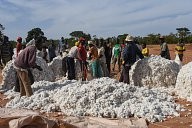
Cotton Campaign in Mali 2019-2020.
Nicolas Réméné / Le Pictorium
LePictorium_0220689.jpg
Between Koutiala and Koury in the Sikasso region of Mali, the cotton harvesting campaign has begun. The seed cotton harvested in the different surrounding fields is centralized in one place. The young workers fill large bags of cotton, balls that they will then be loaded into a dumpster. A truck will then load the bucket to bring it to the mill, a step of separating the cotton fibers from the seeds that carry them. Cotton Campaign in Mali 2019-2020. While the harvest began in virtually all areas of production, Mali, which had set a goal of 800,000 tons of seed cotton, is now reducing its forecasts. If at the launch of the campaign plan last April, the Minister of Agriculture Moulaye Ahmed Boubacar expects an increase of 22% over the previous year, it could be that this campaign is quite poor and hardly exceeds the 600 000T and this despite an increase in cultivation areas. Figures are falling, mainly because of sparse rainfall but also late delivery of agricultural inputs. In Mali, cotton grown on more than 650,000 ha by about 162,000 producers represents 22% of the country's exports. The cotton season allows the creation of many seasonal jobs and it is estimated that nearly 4 million Malians derive their income from cotton farming, which plays a very important role in the socio-economic development of the regions concerned. Mali, which is also suffering a fall in the price of cotton globally, could lose its place this year as the leading producer of seed cotton Africa, at the expense of its neighbor Burkina Faso.

Cotton Campaign in Mali 2019-2020.
Nicolas Réméné / Le Pictorium
LePictorium_0220690.jpg
Between Koutiala and Koury in the Sikasso region of Mali, the cotton harvesting campaign has begun. The seed cotton harvested in the different surrounding fields is centralized in one place. The young workers fill large bags of cotton, balls that they will then be loaded into a dumpster. A truck will then load the bucket to bring it to the mill, a step of separating the cotton fibers from the seeds that carry them. Cotton Campaign in Mali 2019-2020. While the harvest began in virtually all areas of production, Mali, which had set a goal of 800,000 tons of seed cotton, is now reducing its forecasts. If at the launch of the campaign plan last April, the Minister of Agriculture Moulaye Ahmed Boubacar expects an increase of 22% over the previous year, it could be that this campaign is quite poor and hardly exceeds the 600 000T and this despite an increase in cultivation areas. Figures are falling, mainly because of sparse rainfall but also late delivery of agricultural inputs. In Mali, cotton grown on more than 650,000 ha by about 162,000 producers represents 22% of the country's exports. The cotton season allows the creation of many seasonal jobs and it is estimated that nearly 4 million Malians derive their income from cotton farming, which plays a very important role in the socio-economic development of the regions concerned. Mali, which is also suffering a fall in the price of cotton globally, could lose its place this year as the leading producer of seed cotton Africa, at the expense of its neighbor Burkina Faso.
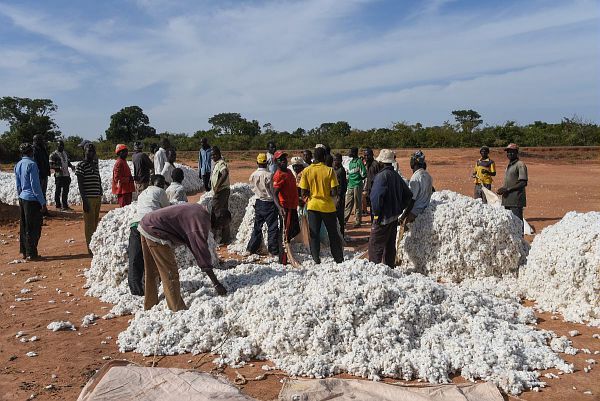
Cotton Campaign in Mali 2019-2020.
Nicolas Réméné / Le Pictorium
LePictorium_0220691.jpg
Between Koutiala and Koury in the Sikasso region of Mali, the cotton harvesting campaign has begun. The seed cotton harvested in the different surrounding fields is centralized in one place. The young workers fill large bags of cotton, balls that they will then be loaded into a dumpster. A truck will then load the bucket to bring it to the mill, a step of separating the cotton fibers from the seeds that carry them. Cotton Campaign in Mali 2019-2020. While the harvest began in virtually all areas of production, Mali, which had set a goal of 800,000 tons of seed cotton, is now reducing its forecasts. If at the launch of the campaign plan last April, the Minister of Agriculture Moulaye Ahmed Boubacar expects an increase of 22% over the previous year, it could be that this campaign is quite poor and hardly exceeds the 600 000T and this despite an increase in cultivation areas. Figures are falling, mainly because of sparse rainfall but also late delivery of agricultural inputs. In Mali, cotton grown on more than 650,000 ha by about 162,000 producers represents 22% of the country's exports. The cotton season allows the creation of many seasonal jobs and it is estimated that nearly 4 million Malians derive their income from cotton farming, which plays a very important role in the socio-economic development of the regions concerned. Mali, which is also suffering a fall in the price of cotton globally, could lose its place this year as the leading producer of seed cotton Africa, at the expense of its neighbor Burkina Faso.
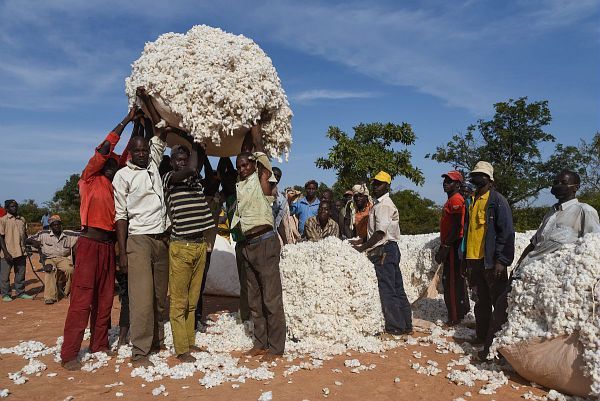
Cotton Campaign in Mali 2019-2020.
Nicolas Réméné / Le Pictorium
LePictorium_0220692.jpg
Between Koutiala and Koury in the Sikasso region of Mali, the cotton harvesting campaign has begun. The seed cotton harvested in the different surrounding fields is centralized in one place. The young workers fill large bags of cotton, balls that they will then be loaded into a dumpster. A truck will then load the bucket to bring it to the mill, a step of separating the cotton fibers from the seeds that carry them. Cotton Campaign in Mali 2019-2020. While the harvest began in virtually all areas of production, Mali, which had set a goal of 800,000 tons of seed cotton, is now reducing its forecasts. If at the launch of the campaign plan last April, the Minister of Agriculture Moulaye Ahmed Boubacar expects an increase of 22% over the previous year, it could be that this campaign is quite poor and hardly exceeds the 600 000T and this despite an increase in cultivation areas. Figures are falling, mainly because of sparse rainfall but also late delivery of agricultural inputs. In Mali, cotton grown on more than 650,000 ha by about 162,000 producers represents 22% of the country's exports. The cotton season allows the creation of many seasonal jobs and it is estimated that nearly 4 million Malians derive their income from cotton farming, which plays a very important role in the socio-economic development of the regions concerned. Mali, which is also suffering a fall in the price of cotton globally, could lose its place this year as the leading producer of seed cotton Africa, at the expense of its neighbor Burkina Faso.

Cotton Campaign in Mali 2019-2020.
Nicolas Réméné / Le Pictorium
LePictorium_0220693.jpg
Between Koutiala and Koury in the Sikasso region of Mali, the cotton harvesting campaign has begun. The seed cotton harvested in the different surrounding fields is centralized in one place. The young workers fill large bags of cotton, balls that they will then be loaded into a dumpster. A truck will then load the bucket to bring it to the mill, a step of separating the cotton fibers from the seeds that carry them. Cotton Campaign in Mali 2019-2020. While the harvest began in virtually all areas of production, Mali, which had set a goal of 800,000 tons of seed cotton, is now reducing its forecasts. If at the launch of the campaign plan last April, the Minister of Agriculture Moulaye Ahmed Boubacar expects an increase of 22% over the previous year, it could be that this campaign is quite poor and hardly exceeds the 600 000T and this despite an increase in cultivation areas. Figures are falling, mainly because of sparse rainfall but also late delivery of agricultural inputs. In Mali, cotton grown on more than 650,000 ha by about 162,000 producers represents 22% of the country's exports. The cotton season allows the creation of many seasonal jobs and it is estimated that nearly 4 million Malians derive their income from cotton farming, which plays a very important role in the socio-economic development of the regions concerned. Mali, which is also suffering a fall in the price of cotton globally, could lose its place this year as the leading producer of seed cotton Africa, at the expense of its neighbor Burkina Faso.
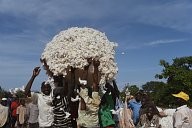
Cotton Campaign in Mali 2019-2020.
Nicolas Réméné / Le Pictorium
LePictorium_0220694.jpg
Between Koutiala and Koury in the Sikasso region of Mali, the cotton harvesting campaign has begun. The seed cotton harvested in the different surrounding fields is centralized in one place. The young workers fill large bags of cotton, balls that they will then be loaded into a dumpster. A truck will then load the bucket to bring it to the mill, a step of separating the cotton fibers from the seeds that carry them. Cotton Campaign in Mali 2019-2020. While the harvest began in virtually all areas of production, Mali, which had set a goal of 800,000 tons of seed cotton, is now reducing its forecasts. If at the launch of the campaign plan last April, the Minister of Agriculture Moulaye Ahmed Boubacar expects an increase of 22% over the previous year, it could be that this campaign is quite poor and hardly exceeds the 600 000T and this despite an increase in cultivation areas. Figures are falling, mainly because of sparse rainfall but also late delivery of agricultural inputs. In Mali, cotton grown on more than 650,000 ha by about 162,000 producers represents 22% of the country's exports. The cotton season allows the creation of many seasonal jobs and it is estimated that nearly 4 million Malians derive their income from cotton farming, which plays a very important role in the socio-economic development of the regions concerned. Mali, which is also suffering a fall in the price of cotton globally, could lose its place this year as the leading producer of seed cotton Africa, at the expense of its neighbor Burkina Faso.
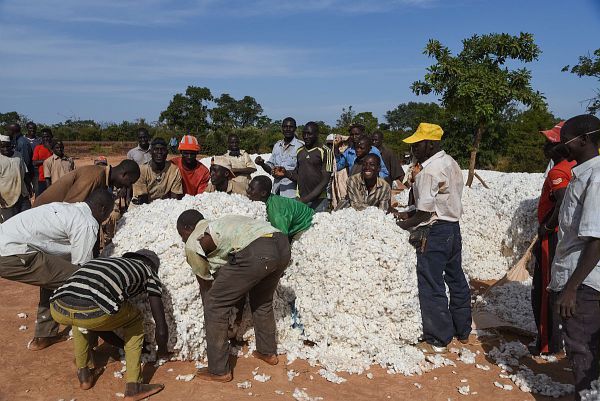
Cotton Campaign in Mali 2019-2020.
Nicolas Réméné / Le Pictorium
LePictorium_0220695.jpg
Between Koutiala and Koury in the Sikasso region of Mali, the cotton harvesting campaign has begun. The seed cotton harvested in the different surrounding fields is centralized in one place. The young workers fill large bags of cotton, balls that they will then be loaded into a dumpster. A truck will then load the bucket to bring it to the mill, a step of separating the cotton fibers from the seeds that carry them. Cotton Campaign in Mali 2019-2020. While the harvest began in virtually all areas of production, Mali, which had set a goal of 800,000 tons of seed cotton, is now reducing its forecasts. If at the launch of the campaign plan last April, the Minister of Agriculture Moulaye Ahmed Boubacar expects an increase of 22% over the previous year, it could be that this campaign is quite poor and hardly exceeds the 600 000T and this despite an increase in cultivation areas. Figures are falling, mainly because of sparse rainfall but also late delivery of agricultural inputs. In Mali, cotton grown on more than 650,000 ha by about 162,000 producers represents 22% of the country's exports. The cotton season allows the creation of many seasonal jobs and it is estimated that nearly 4 million Malians derive their income from cotton farming, which plays a very important role in the socio-economic development of the regions concerned. Mali, which is also suffering a fall in the price of cotton globally, could lose its place this year as the leading producer of seed cotton Africa, at the expense of its neighbor Burkina Faso.
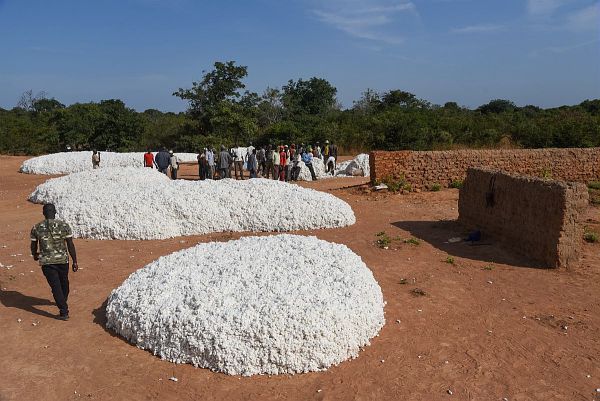
Cotton Campaign in Mali 2019-2020.
Nicolas Réméné / Le Pictorium
LePictorium_0220696.jpg
Between Koutiala and Koury in the Sikasso region of Mali, the cotton harvesting campaign has begun. The seed cotton harvested in the different surrounding fields is centralized in one place. The young workers fill large bags of cotton, balls that they will then be loaded into a dumpster. A truck will then load the bucket to bring it to the mill, a step of separating the cotton fibers from the seeds that carry them. Cotton Campaign in Mali 2019-2020. While the harvest began in virtually all areas of production, Mali, which had set a goal of 800,000 tons of seed cotton, is now reducing its forecasts. If at the launch of the campaign plan last April, the Minister of Agriculture Moulaye Ahmed Boubacar expects an increase of 22% over the previous year, it could be that this campaign is quite poor and hardly exceeds the 600 000T and this despite an increase in cultivation areas. Figures are falling, mainly because of sparse rainfall but also late delivery of agricultural inputs. In Mali, cotton grown on more than 650,000 ha by about 162,000 producers represents 22% of the country's exports. The cotton season allows the creation of many seasonal jobs and it is estimated that nearly 4 million Malians derive their income from cotton farming, which plays a very important role in the socio-economic development of the regions concerned. Mali, which is also suffering a fall in the price of cotton globally, could lose its place this year as the leading producer of seed cotton Africa, at the expense of its neighbor Burkina Faso.
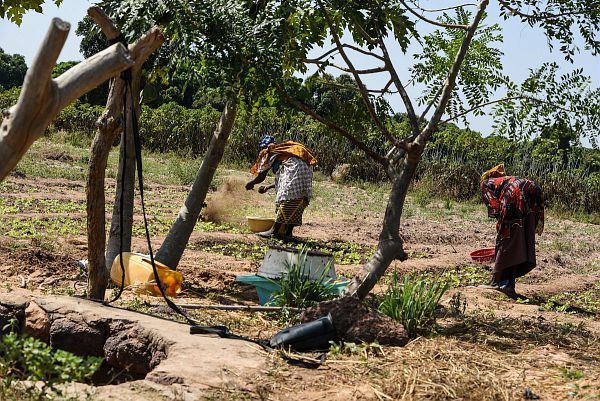
Agroecology in Mali
Nicolas Réméné / Le Pictorium
LePictorium_0195477.jpg
Sindalak, Siby (Mali), A woman is putting a "traditional" fertilizer (bark, manure and various plant residues) on a plot of the Sindalak community garden.
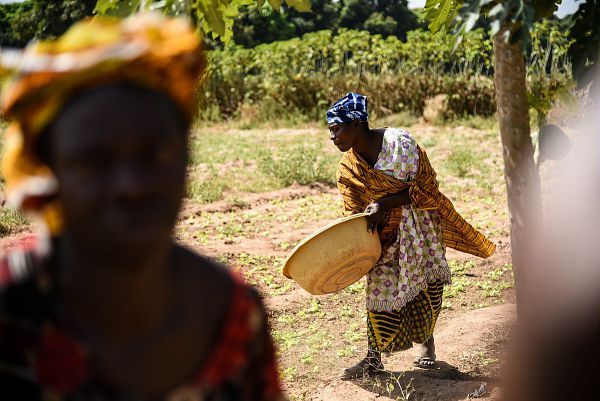
Agroecology in Mali
Nicolas Réméné / Le Pictorium
LePictorium_0195478.jpg
Sindalak, Siby (Mali), A woman is putting a "traditional" fertilizer (bark, manure and various plant residues) on a plot of the Sindalak community garden.
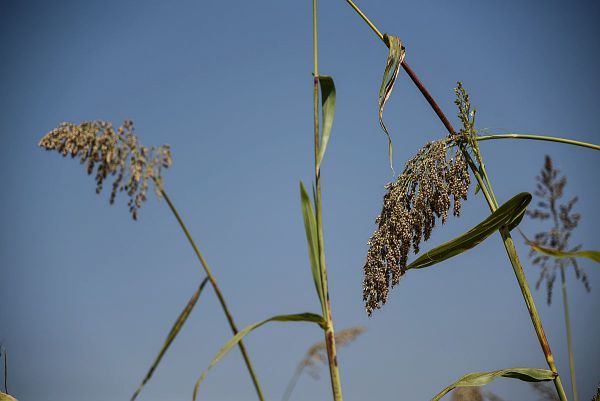
Agroecology in Mali
Nicolas Réméné / Le Pictorium
LePictorium_0195479.jpg
Siby (Mali) 50 km from Bamako. Feet of sorghum.
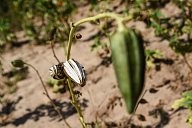
Agroecology in Mali
Nicolas Réméné / Le Pictorium
LePictorium_0195480.jpg
Siby (Mali) 50 km from Bamako. Okra feet.
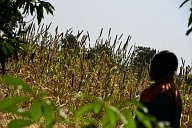
Agroecology in Mali
Nicolas Réméné / Le Pictorium
LePictorium_0195481.jpg
Siby (Mali) 50 km from Bamako. A field of millet.

Agroecology in Mali
Nicolas Réméné / Le Pictorium
LePictorium_0195482.jpg
Siby (Mali) 50 km from Bamako. Abdoulaye Camara in a millet field before harvest.
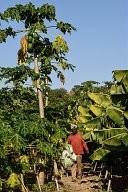
Agroecology in Mali
Nicolas Réméné / Le Pictorium
LePictorium_0195483.jpg
Djejenni, Siby (Mali) Market garden

Agroecology in Mali
Nicolas Réméné / Le Pictorium
LePictorium_0195484.jpg
djejenni, Siby (Mali) Eggplant culture.
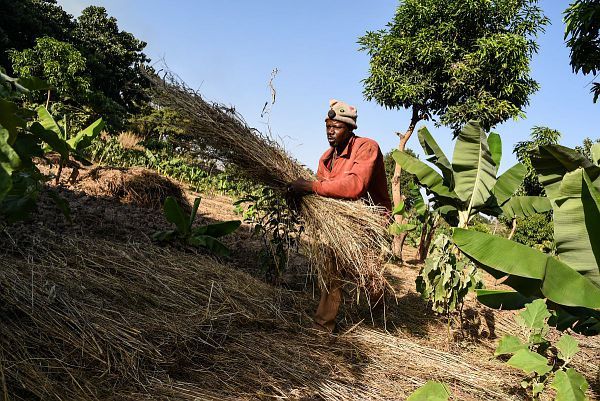
Agroecology in Mali
Nicolas Réméné / Le Pictorium
LePictorium_0195485.jpg
Djenjeni, Siby (Mali), Lamine Camara, applies straw to her eggplant crops. This technique allows it to keep the wet earth longer.
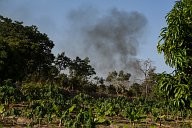
Agroecology in Mali
Nicolas Réméné / Le Pictorium
LePictorium_0195486.jpg
Djejenni, Siby (Mali) Practice of an agrarian system called slash-and-burn agriculture. the fields are cleared by fire and then cultivated for a short period of time and then fallow.

Agroecology in Mali
Nicolas Réméné / Le Pictorium
LePictorium_0195487.jpg
Djenjeni, Siby (Mali), Cotton fields just before the harvest.
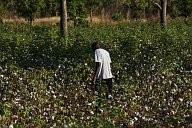
Agroecology in Mali
Nicolas Réméné / Le Pictorium
LePictorium_0195488.jpg
Djenjeni, Siby (Mali), Cotton fields just before the harvest.
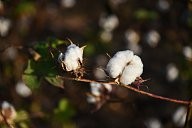
Agroecology in Mali
Nicolas Réméné / Le Pictorium
LePictorium_0195489.jpg
Djenjeni, Siby (Mali), Cotton fields just before the harvest.
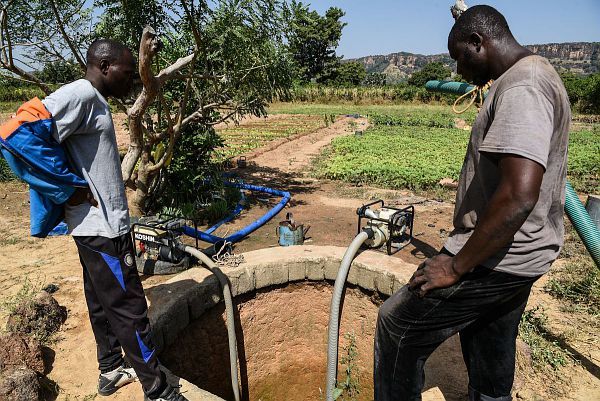
Agroecology in Mali
Nicolas Réméné / Le Pictorium
LePictorium_0195466.jpg
Sindalak, Siby (Mali) Irrigation in the form of small canals in a community garden. Water is extracted from the wells by means of motor pumps.
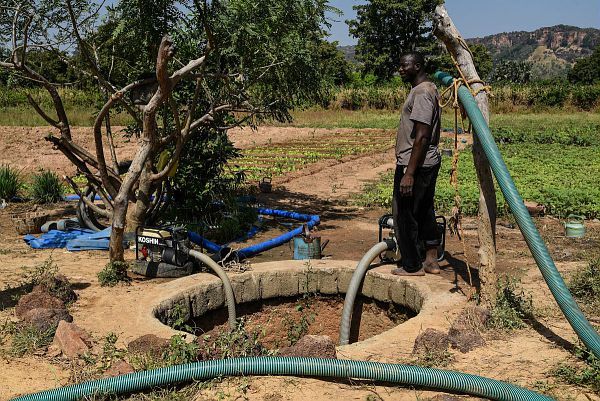
Agroecology in Mali
Nicolas Réméné / Le Pictorium
LePictorium_0195467.jpg
Sindalak, Siby (Mali) Irrigation in the form of small canals in a community garden. Water is extracted from the wells by means of motor pumps.
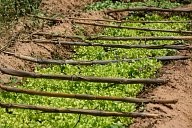
Agroecology in Mali
Nicolas Réméné / Le Pictorium
LePictorium_0195468.jpg
Siby (Mali) 50 km from Bamako. Salad plants in a market garden.
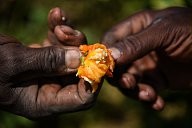
Agroecology in Mali
Nicolas Réméné / Le Pictorium
LePictorium_0195469.jpg
Sindalak, Siby (Mali), N'Goyo seed, variety of round eggplant.
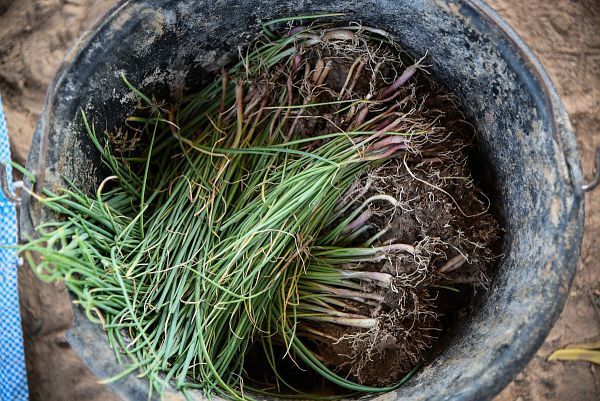
Agroecology in Mali
Nicolas Réméné / Le Pictorium
LePictorium_0195470.jpg
Siby (Mali) 50 km from Bamako. Onion plants ready to be replanted.
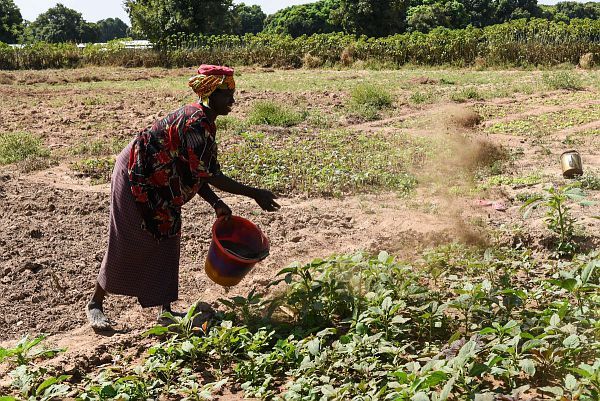
Agroecology in Mali
Nicolas Réméné / Le Pictorium
LePictorium_0195471.jpg
Sindalak, Siby (Mali), A woman is putting a "traditional" fertilizer (bark, manure and various plant residues) on a plot of the Sindalak community garden.
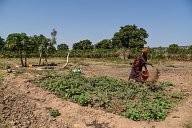
Agroecology in Mali
Nicolas Réméné / Le Pictorium
LePictorium_0195472.jpg
Sindalak, Siby (Mali), A woman is putting a "traditional" fertilizer (bark, manure and various plant residues) on a plot of the Sindalak community garden.
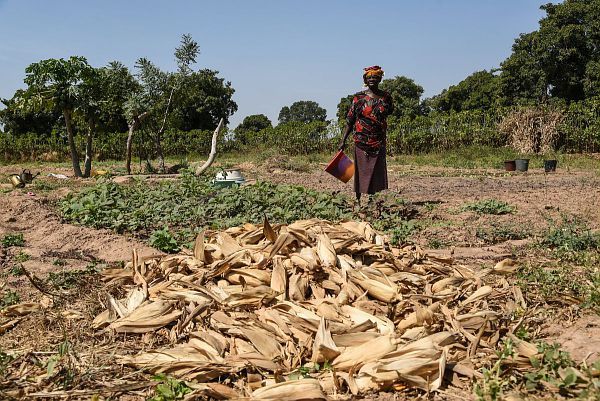
Agroecology in Mali
Nicolas Réméné / Le Pictorium
LePictorium_0195473.jpg
Sindalak, Siby (Mali), A woman is putting a "traditional" fertilizer (bark, manure and various plant residues) on a plot of the Sindalak community garden.
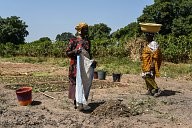
Agroecology in Mali
Nicolas Réméné / Le Pictorium
LePictorium_0195474.jpg
Sindalak, Siby (Mali), A woman is putting a "traditional" fertilizer (bark, manure and various plant residues) on a plot of the Sindalak community garden.
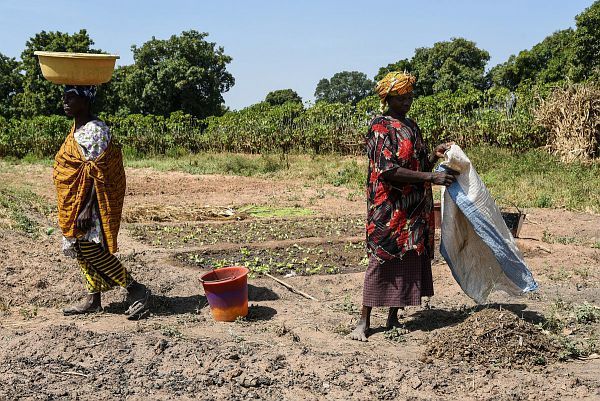
Agroecology in Mali
Nicolas Réméné / Le Pictorium
LePictorium_0195475.jpg
Sindalak, Siby (Mali), A woman is putting a "traditional" fertilizer (bark, manure and various plant residues) on a plot of the Sindalak community garden.
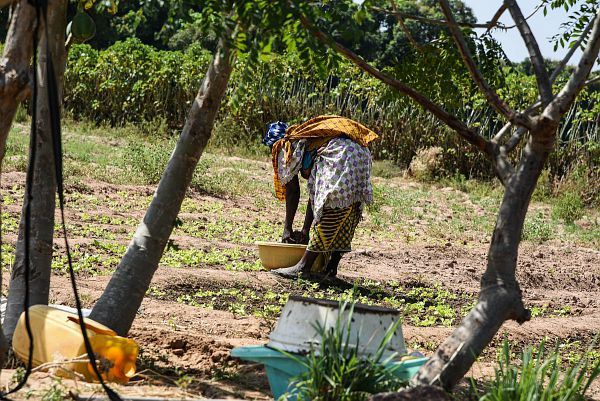
Agroecology in Mali
Nicolas Réméné / Le Pictorium
LePictorium_0195476.jpg
Sindalak, Siby (Mali), A woman is putting a "traditional" fertilizer (bark, manure and various plant residues) on a plot of the Sindalak community garden.
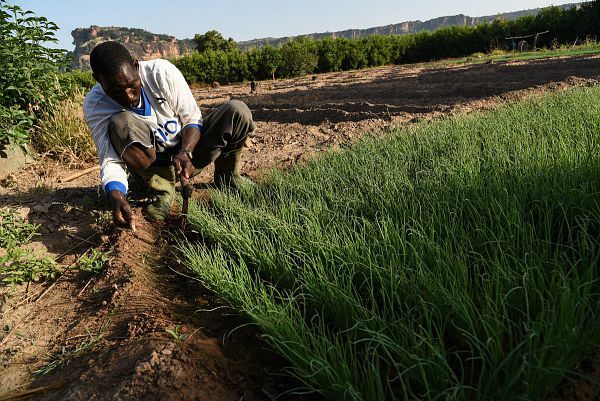
Agroecology in Mali
Nicolas Réméné / Le Pictorium
LePictorium_0195438.jpg
Morola, Siby (Mali), Brahma Camara, big brother of Abdoulaye Camara, removes the weeds in a plot of onions from the family garden. The onion shoots will then be torn off to be multiplied by division. Technique of cutting a bulb in two and replanting.
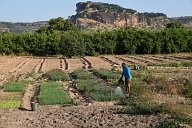
Agroecology in Mali
Nicolas Réméné / Le Pictorium
LePictorium_0195439.jpg
Morola, Siby (Mali), A young man sprinkles a crop of onions in vegetable gardens.
Next page
